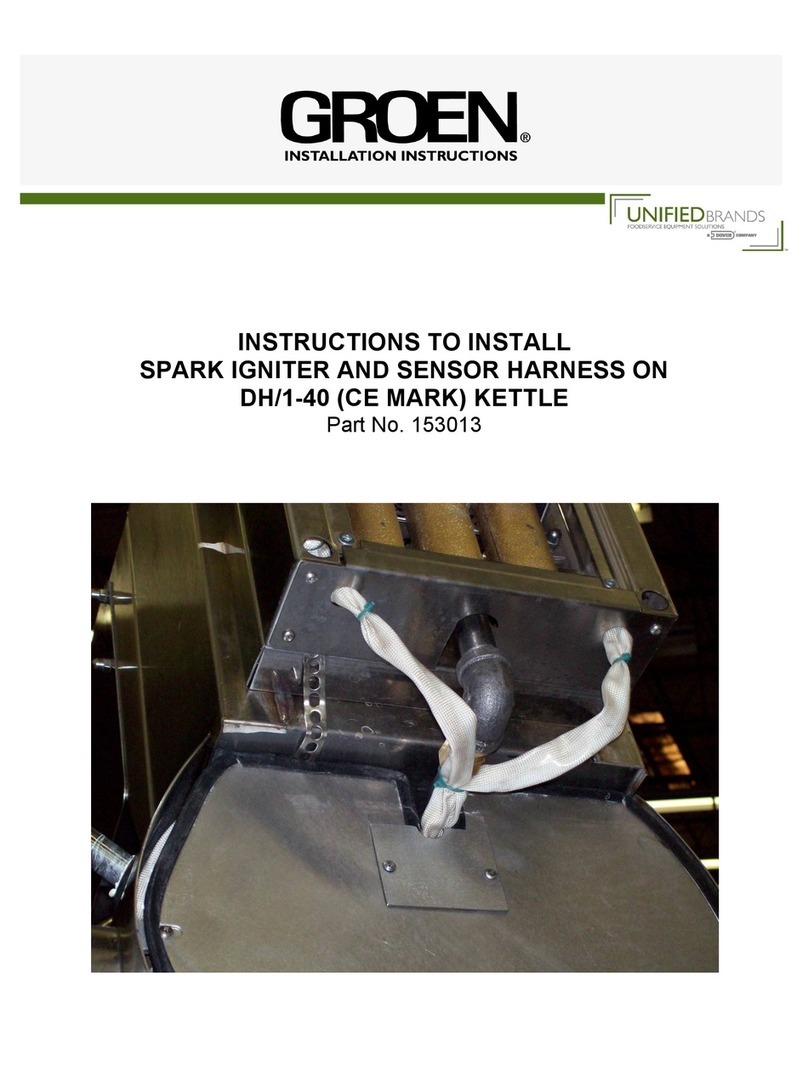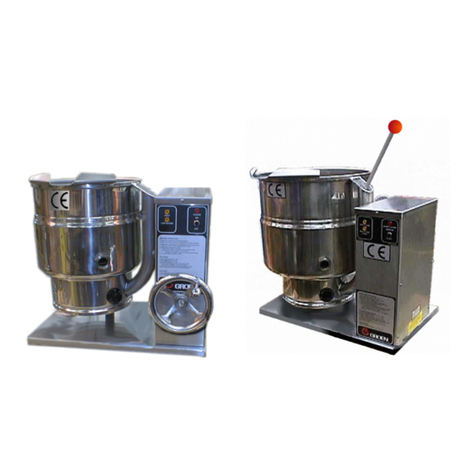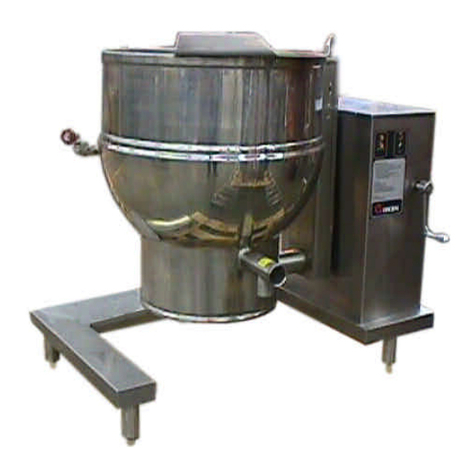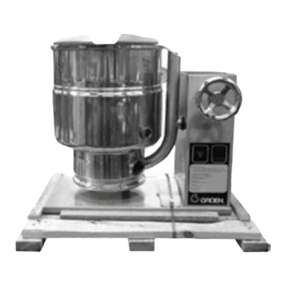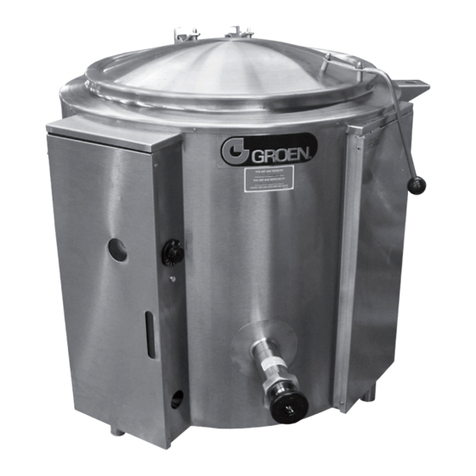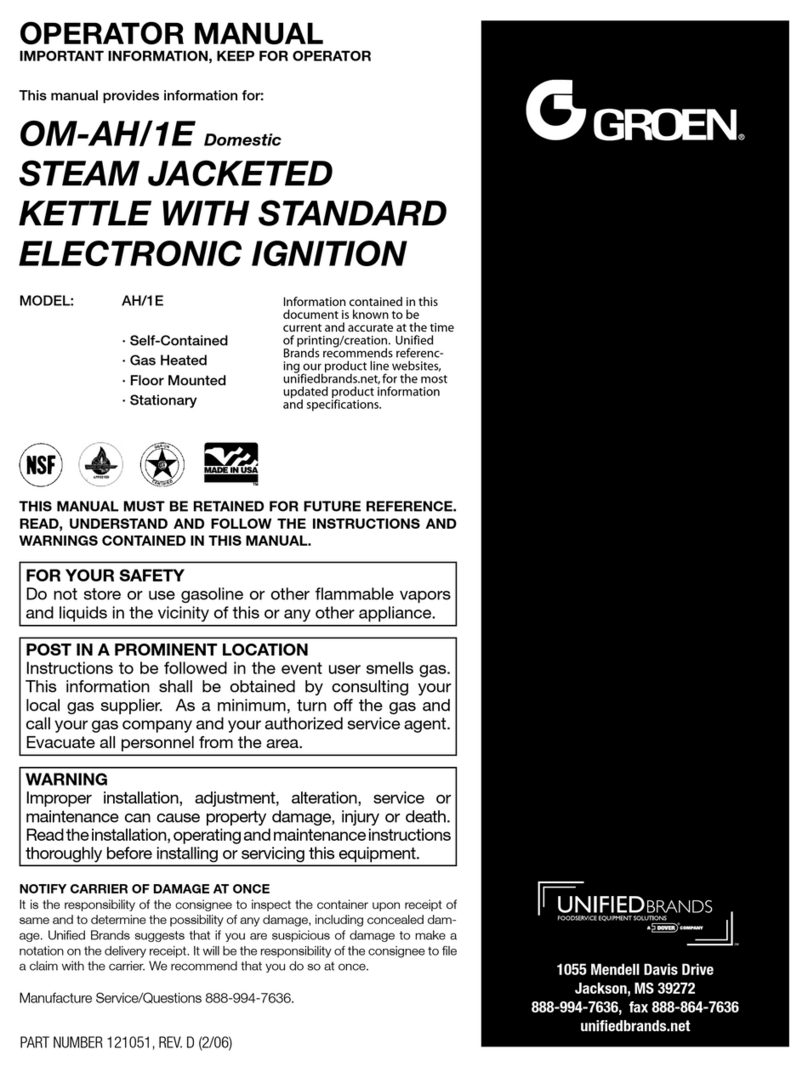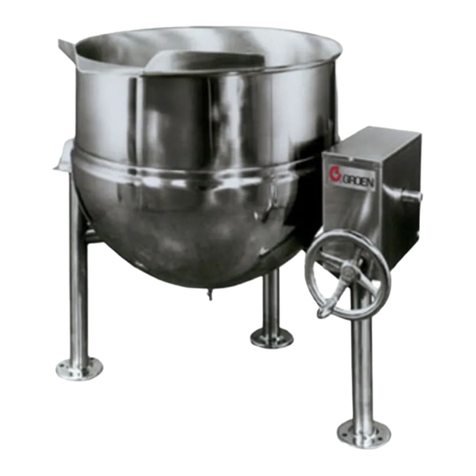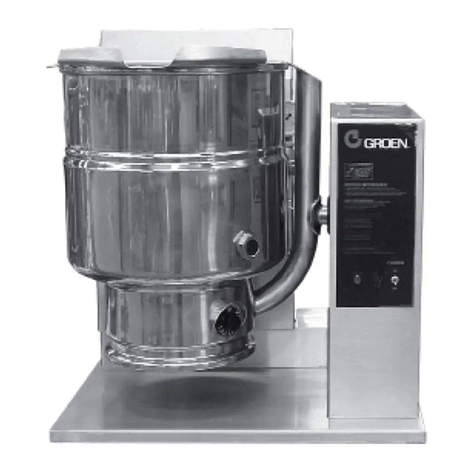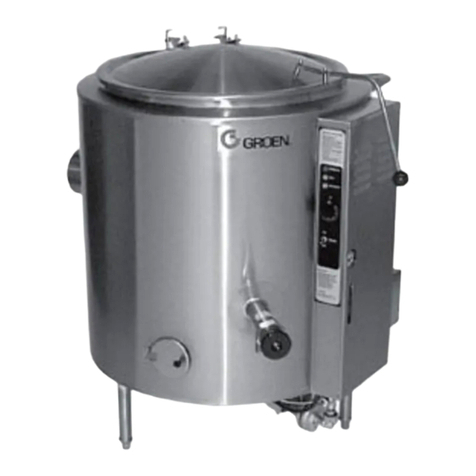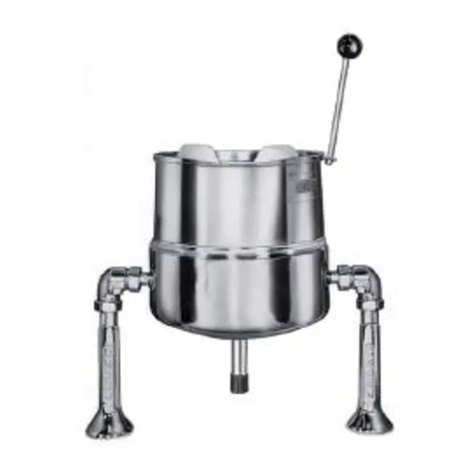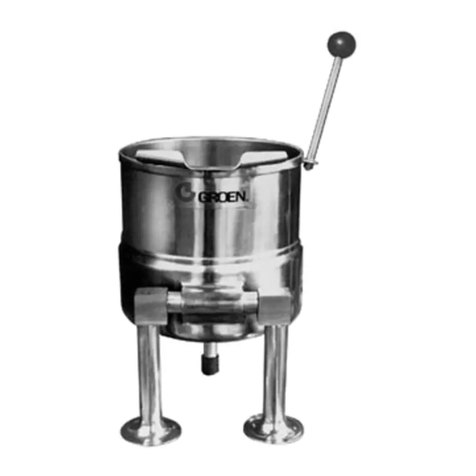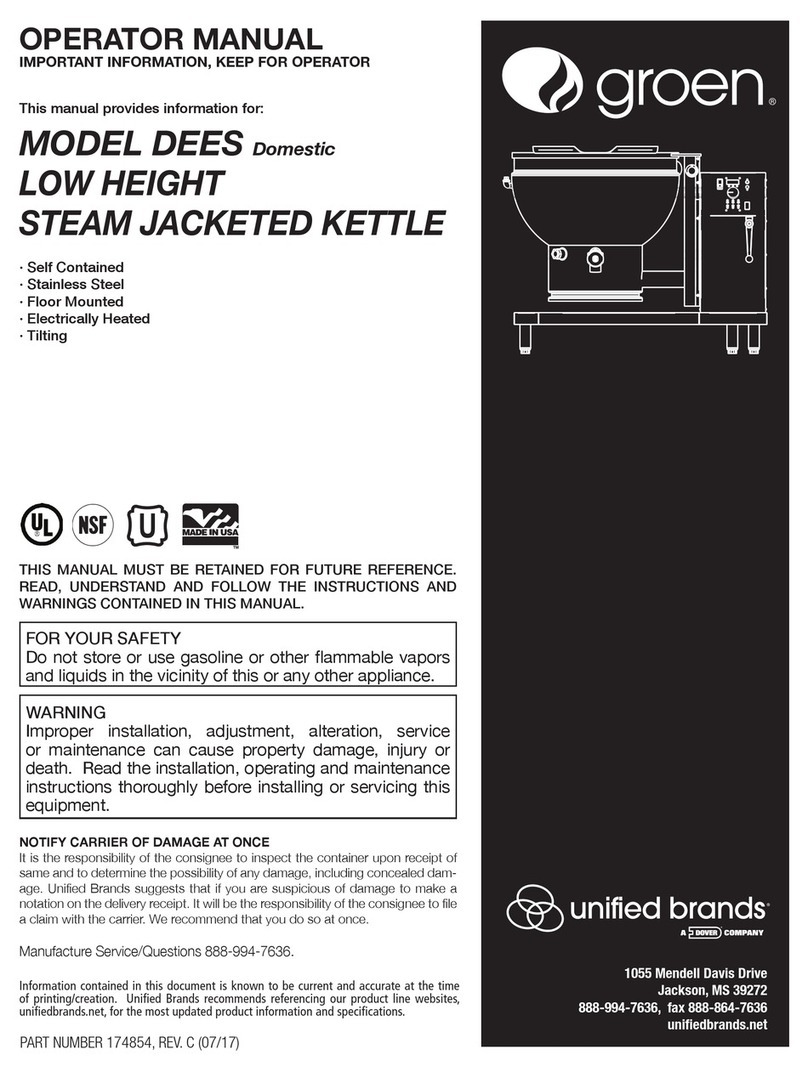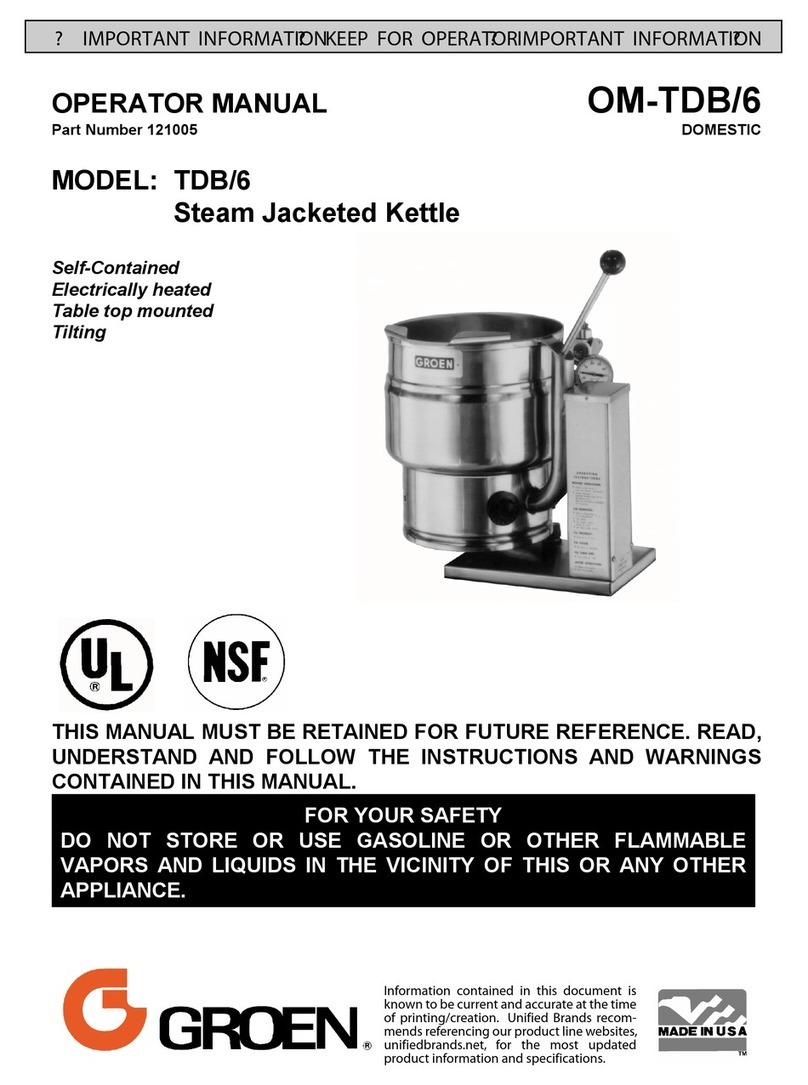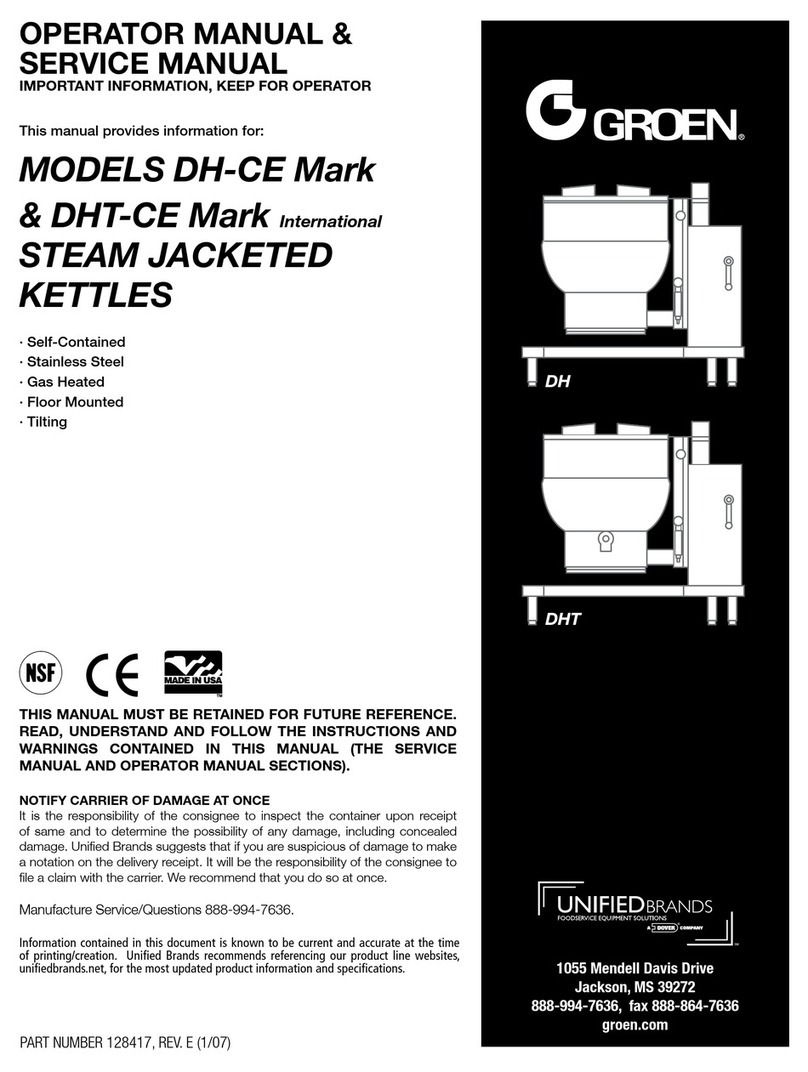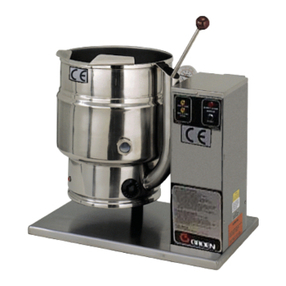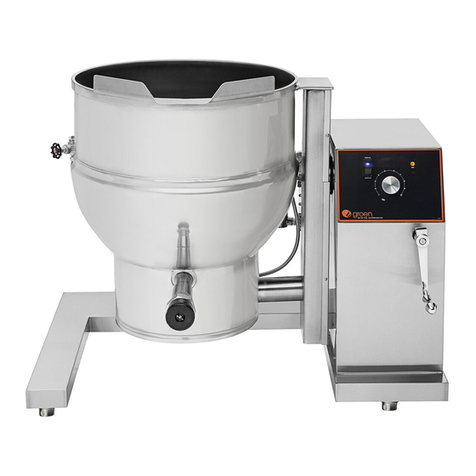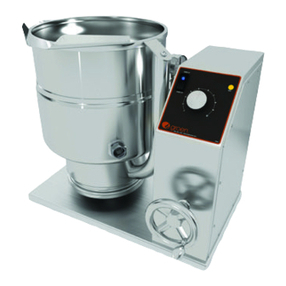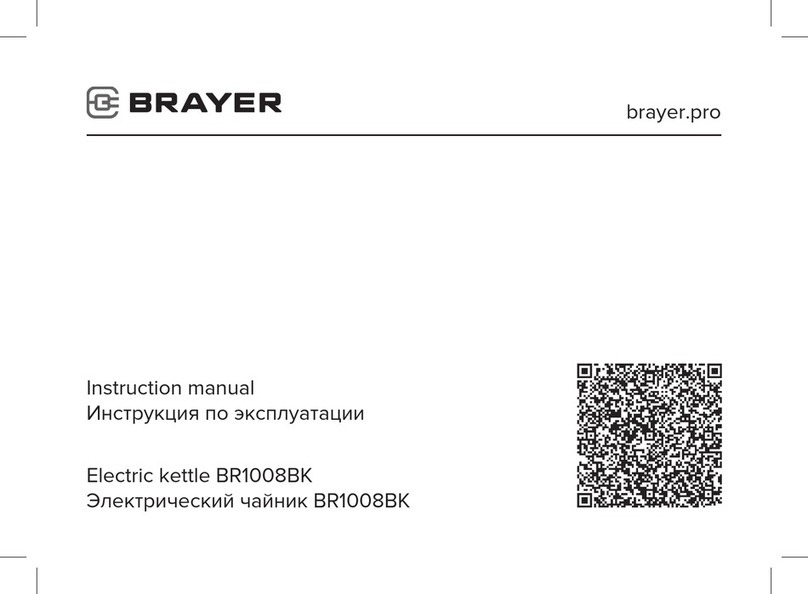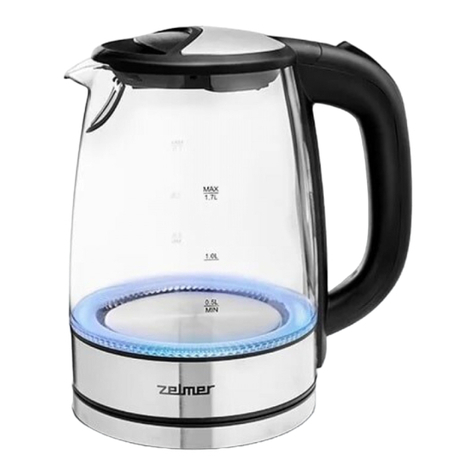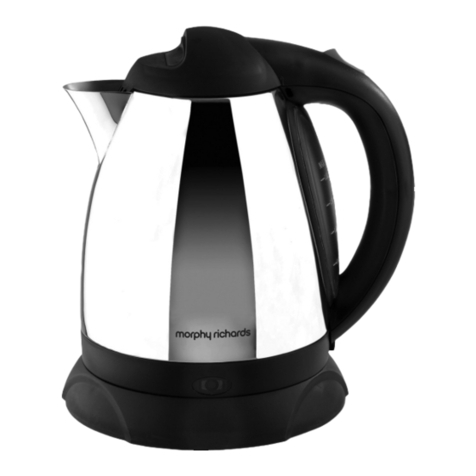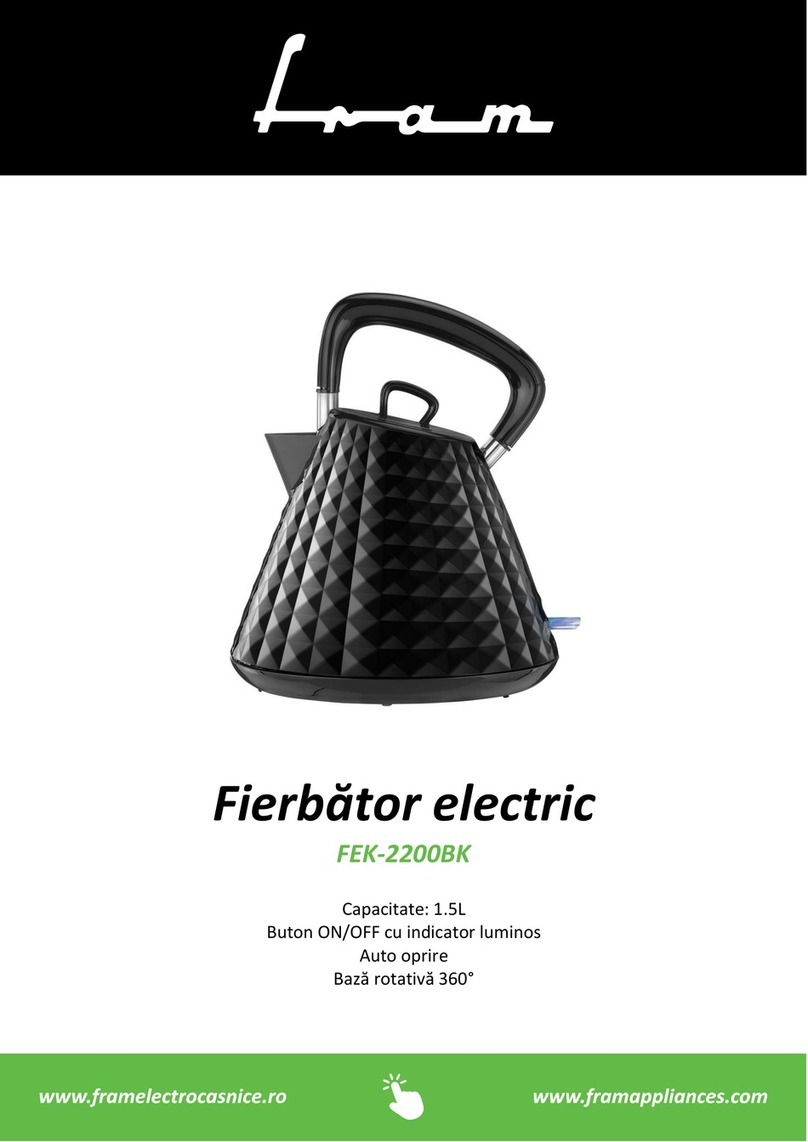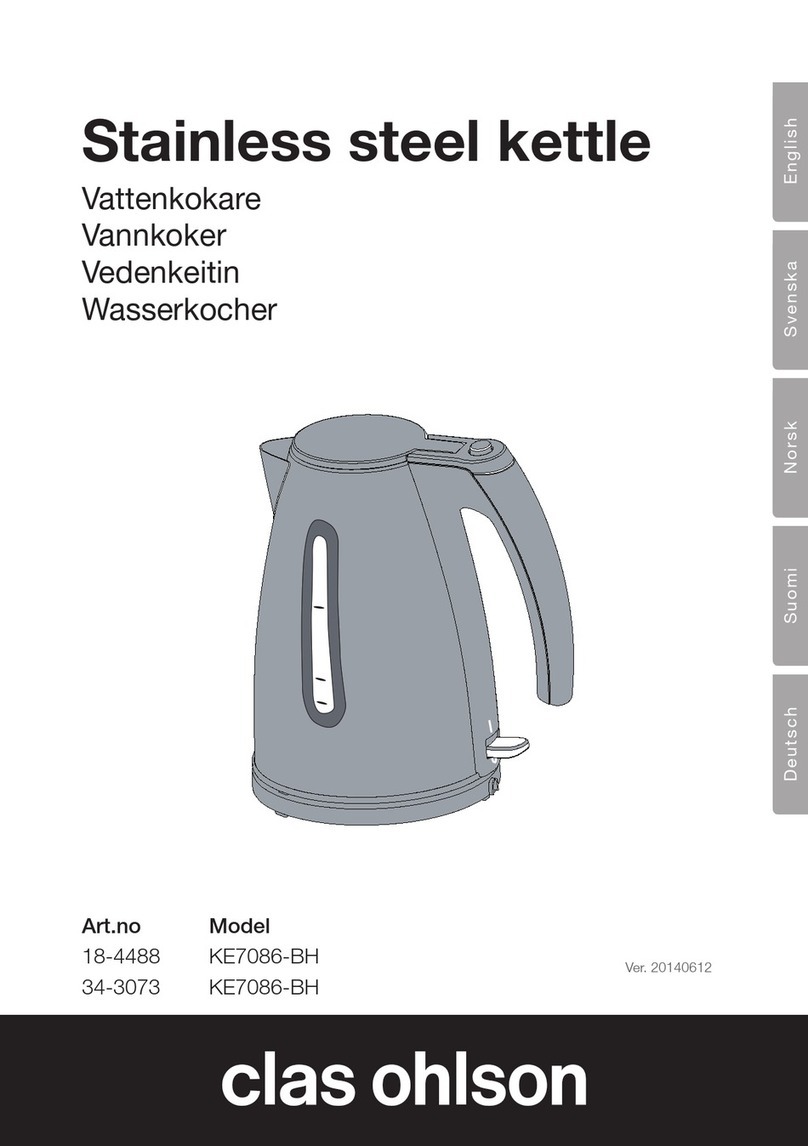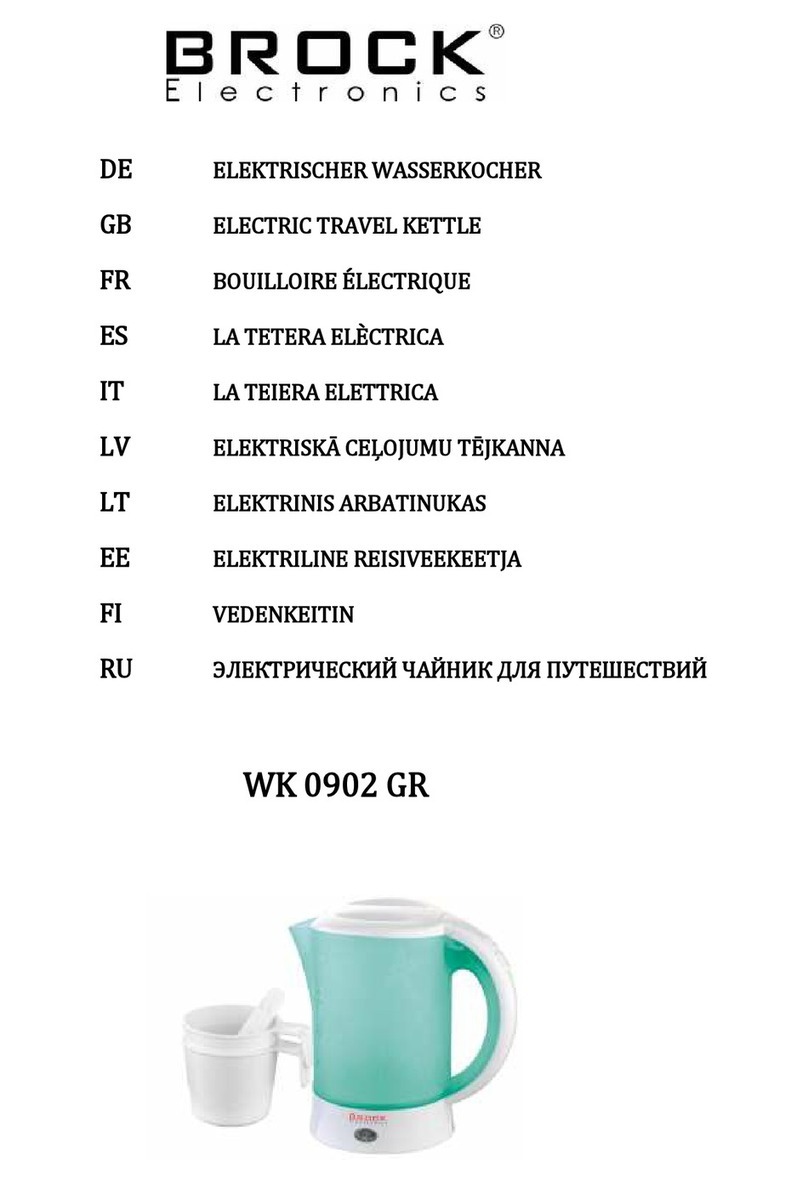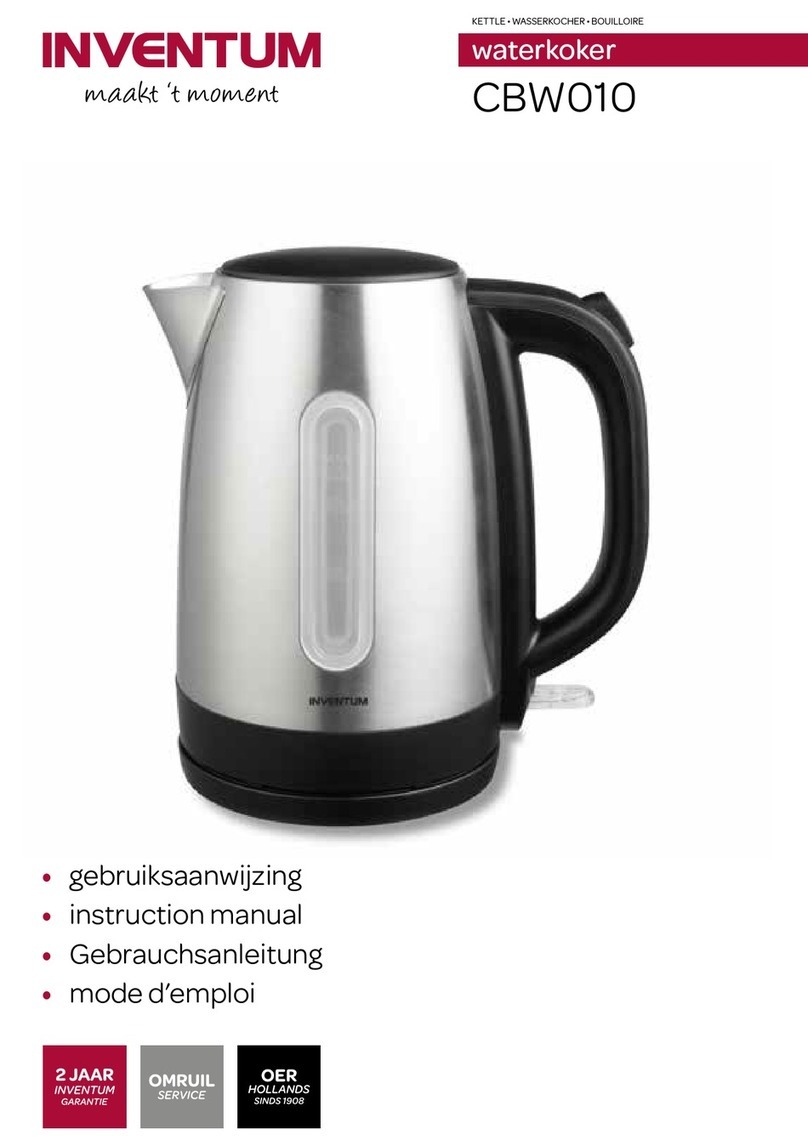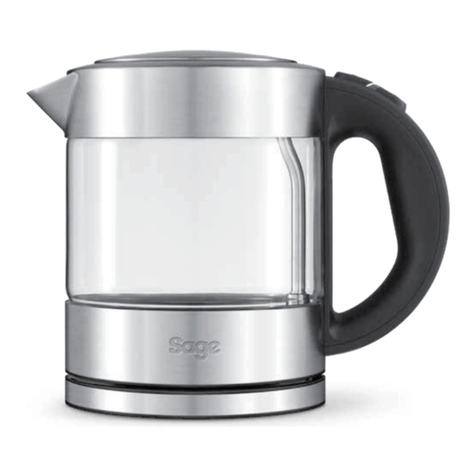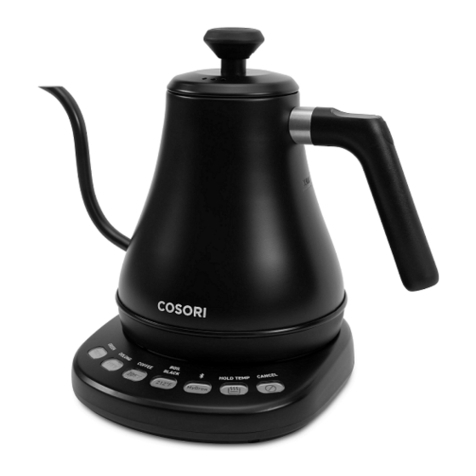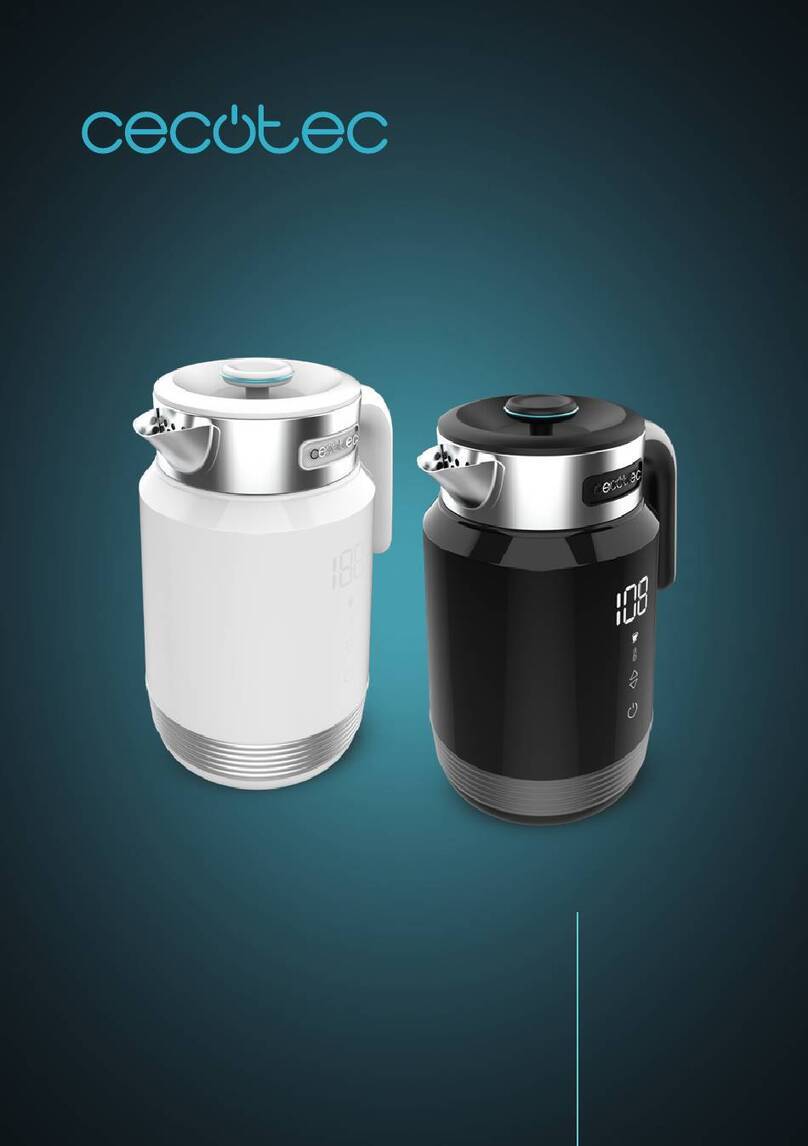
8 OM-DEE/4
Operation
CE units have three lights on the Control Panel. The green POWER light comes on
when the unit is turned on. It indicates that power is being supplied to the unit. The
amber HEAT light comes on when heating elements are heating the kettle. The red
LOW WATER light will come on when water level in the jacket falls below acceptable
operating levels. Refer to the section on Jacket Filling and Water Treatment (Page 14).
A. To Start Kettle
1. EVERY DAY make sure that the jacket water level is between the
markers on the gauge glass. If the level is too low, see “Jacket Filling
and Water Treatment” on page 14.
2. Check the pressure gauge. If the gauge does not show 20 to 30 inches
of vacuum (that is a reading of 20 to 30 below 0 atmospheric pressure),
see “Jacket Vacuum” on page 14.
3. Turn on the electrical power to the unit by setting the power switch to
ON. The green POWER indicator should light.
4. Turn the thermostat to desired setting. The amber HEAT indicator light
will come on. Cycling of the light on and off the shows that the kettle is
being held at the set temperature. Once in each cycle the contactors in
the support housing will make a clicking sound. This is normal.
B. To Transfer Product or Empty Kettle
1. The kettle is tilted by means of the crank on the front of the control
housing. The kettle remains in the position to which tilted until cranked
again.
2. Product may also be transferred by means of the optional draw-off valve
if the kettle is so equipped.
C. Common Accessories
1. LIft-Off Cover or Counterbalanced Cover
As with stock pot cooking, an optional cover can speed up the heating of
water and food products. A cover helps retain heat and reduces the heat
and humidity released into the kitchen. Using a cover can reduce some
product cook times and help maintain the temperature, color and texture
of products being held or simmered for longer periods.
Be sure the handle is secure on the lift-off cover before using. ALWAYS
use the handle to place or remove cover from the kettle. Wear protective
oven mitts and a protective apron.
When putting a lift-off cover on the kettle, position it on top of kettle rim,
with its flat edge facing the pouring lip.
WARNING
WHEN TILTING KETTLE
1) WEAR PROTECTIVE OVEN MITT AND
PROTECTIVE APRON.
2) USE DEEP CONTAINER TO CONTAIN AND
MINIMIZE PRODUCT SPLASHING.
3) PLACE CONTAINER ON STABLE, FLAT
SURFACE, AS CLOSE TO KETTLE AS
POSSIBLE.
4) STAND TO RIGHT OF KETTLE WHILE
POURING—NOT DIRECTLY IN POUR PATH
OF HOT CONTENTS.
5) POUR SLOWLY, MAINTAINING CONTROL
OF KETTLE, AND RETURN KETTLE BODY TO
UPRIGHT POSITION AFTER CONTAINER IS
FILLED OR TRANSFER IS COMPLETE.
6) DO NOT OVERFILL CONTAINER. AVOID
SKIN CONTACT WITH HOT CONTAINER AND
ITS CONTENTS.
CAUTION
DO NOT OVERFILL THE KETTLE WHEN
COOKING, HOLDING OR CLEANING.
KEEP LIQUIDS AT LEAST 2-3” (5-8 cm)
BELOW THE KETTLE BODY RIM TO
ALLOW CLEARANCE FOR STIRRING,
BOILING PRODUCT AND SAFE TRANSFER.
